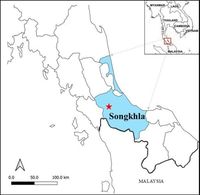In a groundbreaking study in southern Thailand, researchers have identified eight hard tick species, highlighting their ecological diversity and potential risks related to tick-borne diseases.
The study, published on March 24, 2025, in Scientific Reports, assessed a total of 466 tick samples collected from vegetation in Songkhla Province. The tick species identified include Dermacentor compactus, D. steini, D. auratus, D. tricuspis, Haemaphysalis hystricis, H. semermis, H. shimoga, and Amblyomma testudinarium. Among these, Dermacentor compactus was the most prevalent species with 150 samples collected.
Importantly, the researchers detected Coxiella bacteria in 93 of the tick samples, which raises significant public health concerns. These bacteria include Coxiella burnetii, the causative agent of Q fever, which was identified in H. hystricis and D. steini for the first time in the region.
Coxiella are obligate intracellular bacteria known for causing zoonotic diseases, particularly affecting ruminants like cattle and goats. The discovery of C. burnetii in local tick populations is alarming, as it suggests a reservoir for potential human infections.
In addition to C. burnetii, the study identified Coxiella-like endosymbionts (CLEs) in 84 ticks from seven species. This includes previously undocumented associations of CLEs with D. compactus and H. semermis in Thailand, underscoring the assay's comprehensive nature.
The researchers conducted DNA sequencing and phylogenetic analysis using the 16S rRNA, groEL, and rpoB genes to distinguish between the pathogenic C. burnetii and the non-pathogenic CLEs. Their alignment revealed key differences at specific nucleotide positions, which could serve as molecular markers for identifying these bacteria in tick populations.
The collection of ticks occurred every two months from July 2021 to May 2022 around an area of approximately two square kilometers in Hat Yai District, providing an extensive dataset for analysis. "Our findings not only map the diversity of tick species present in southern Thailand, but they also provide critical insight into the roles of ticks as vectors for Coxiella bacteria," wrote the authors of the article.
Overall, this study enhances the understanding of tick biodiversity in southeast Asia, a critical element as this region faces numerous challenges related to emergent tick-borne diseases. As biodiversity influences the spread of pathogens, particularly zoonotic diseases, the significance of this research could have far-reaching implications for public health and veterinary medicine in Thailand and surrounding areas.
Researchers are calling for enhanced monitoring and surveillance of tick-borne diseases to mitigate potential human and animal health risks linked to these findings. An in-depth analysis of the relationship between ticks and Coxiella is imperative to understand how these organisms interact and transmit pathogens, particularly in biodiversity-rich environments like Thailand.
This research not only highlights the urgent need for further investigation into the epidemiological significance of C. burnetii in tick populations but also stresses the necessity for public health initiatives to monitor and manage tick-borne pathogen risks effectively.




